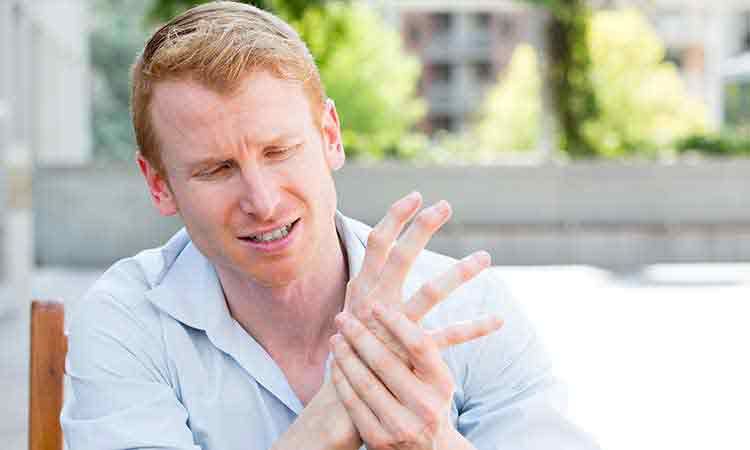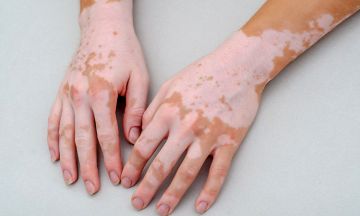10 Signs and Symptoms of Rheumatoid Arthritis
Maybe it starts when you wake up: your feet hurt, making it difficult to walk across the floor. Buttoning your shirt takes longer to do, and your ring doesn’t fit over your swollen finger. You’re sorer than usual after your daily walk. You think perhaps you’re just getting older, but after a few months, you check with your doctor. A set of blood tests and a thorough exam reveals that it’s rheumatoid arthritis (RA). The entire process takes a long time and then doctors say – “It’s too late! Now, you can just manage the disease and not cure it completely. If you would have come earlier – I could save your life from this menace!
You feel very bad at that moment. If those nagging symptoms of rheumatoid arthritis were known to you – you could have taken necessary precautions to make it better. But, it’s never too late! Read about this disease and its warning signs and symptoms.
What is Rheumatoid Arthritis (RA)?
RA is a chronic inflammatory disease that causes small joints to swell up and hurt. It affects an estimated 1 to 2 percent of the population globally. Women are thrice as commonly affected as men. This joint disorder commonly affects more than one joint and can affect any joint in the body. It starts during the middle ages and is most common in older people.
RA symptoms range from slightly problematic to disabling, and can make even simple daily tasks more difficult.
Signs and Symptoms of Rheumatoid Arthritis (RA)
- Fatigue - You may feel unusually fatigued well before any other symptoms become obvious. Fatigue can precede the onset of other symptoms by weeks or months. It may come and go from week to week or day to day. Fatigue is sometimes accompanied by a general feeling of ill health or even depression.
- Morning stiffness - Morning stiffness is often an early sign of arthritis. Stiffness that lasts for a few minutes is usually a symptom of a degenerative form of arthritis. Stiffness that lasts for several hours is generally a symptom of inflammatory arthritis and is typical of RA. You may also feel stiffness after any period of prolonged inactivity like napping or sitting.
- Joint Stiffness - Stiffness in one or more of the smaller joints is a common early sign of RA. This can occur at any time of day, whether you are active or not. Typically, stiffness begins in the joints of the hands. It usually comes on slowly, although it can come on suddenly and affect multiple joints over the course of one or two days.
- Joint Pain - Joint stiffness is often followed by joint tenderness or pain during movement or while at rest. This also affects both sides of the body equally. In early RA, the most common sites for pain are the fingers and wrists. You may also experience pain in your knees, feet, ankles, or shoulders.
- Mild Joint Swelling - Mild inflammation of the joints is typical early on, causing your joints to appear bigger than normal. This swelling can also cause joints to feel warm to the touch. Flare-ups can last anywhere from a few days to a few weeks, and this pattern can be expected to increase with time. Subsequent flare-ups may be felt in the same joints or in other joints.
- Fever - When accompanied by other symptoms like joint pain and inflammation, a low-grade fever may be an early warning sign that you have RA. However, a fever higher than 100 degrees Fahrenheit (38 degrees Celsius) is more likely to be a sign of some other form of illness or an infection.
- Numbness or Tingling in the hands - Inflammation of tendons can create pressure on your nerves. This may cause numbness, tingling, or a burning feeling in your hands referred to as carpal tunnel syndrome. The sensation is often worst at night. If you go to a doctor with these symptoms and don’t have (or tell him or her about) other RA symptoms, you may be diagnosed only with carpal tunnel syndrome.
- Hard to Heal Injuries - One day you’re playing soccer and the next day your knee gets swollen. You are trying to heal the injury with the help of surgeries and physical therapies but the pain just doesn’t go! Then, your doctor says, it’s due to rheumatoid arthritis! Yes! This happens with the RA patients – an injury doesn’t seem to heal easily and this is more common in younger people.
- Foot trouble - Women often stop wearing heels and head to a podiatrist due to the pain. Some people with RA may also develop pain in the heel because of plantar fasciitis, a common foot disorder caused by swelling of the tissue at the bottom of the foot, near the heel.
- Eye problem - People with RA are also at risk for Sjogren’s syndrome, an autoimmune disorder that can cause dryness of the eyes, mouth, nose, throat, or skin due to inflammation that stops glands from releasing moisture. This can happen even in the early stages of RA, but it’s unlikely to be the only symptom.
See your homeopath to get a proper diagnosis for Rheumatoid Arthritis (RA) if you’re experiencing some of these early symptoms. The key to homeopathic treatment is how best one can first categorise the symptoms, based on the unique nature and temperament of the individual, and then ‘match’ the appropriate homeopathic medicines for rheumatoid arthritis to the patient.
Homeopathic medicines for rheumatoid arthritis have been clinically proven to reduce arthritic inflammation, relieve pain and mend the tissues. They also have the ability to stimulate the body’s natural ability to heal from the inside out, and not just on the joint surface.



